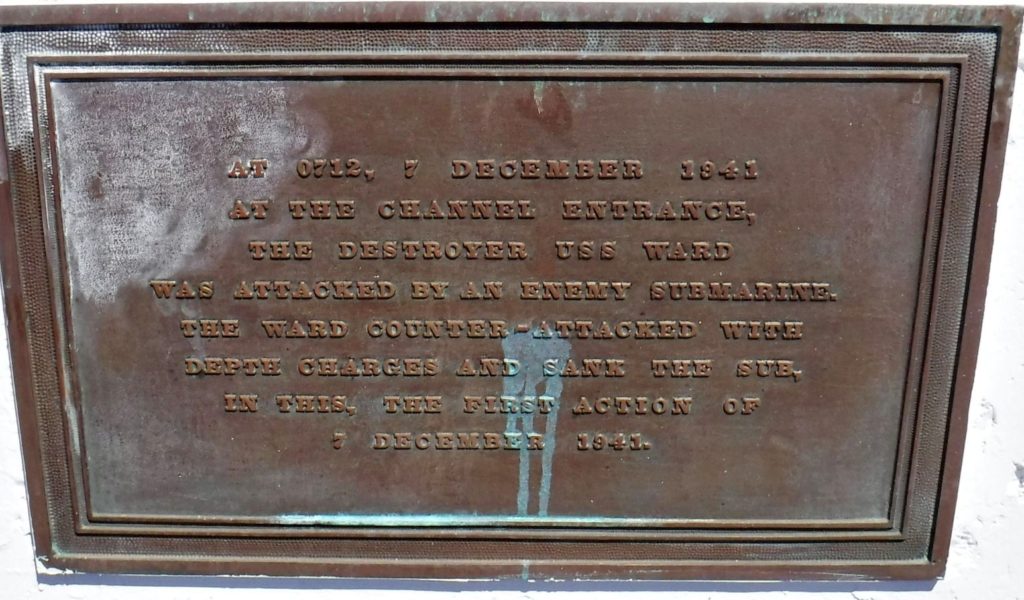
Ze626. This plaque Commemorates the USS Ward firing the first shot on the 7th Dec. 1941 and sinking an Imperial Japanese Mini Submarine. It is located at Bishop Point, at the entrance of Pearl Harbor.
—————————————————————
On the 7th Oct. 2019 I visited the Mobile Diving and Salvage Unit One (MDSU-1) at Bishop Point, located at the channel entrance of Pearl Harbor, I was stationed in this unit from 1981 to 1983. I noticed this plaque located on a corner of Building 17, MDSU-1 Head Quarter. I do not remember whether the plaque already existed then but I bet it was there. That shows you how much attention I paid to history when one has a full-time job on your hands.
Better late then never, lets catch up with history about the USS Ward firing the First Shot and causing the first casualties in the WWII Pacific War. And we add a little history of Bishop Point, I was not only stationed here, but the Salvage ships I served on berthed here also. Also, it is a neat point, that this Naval Location is surrounded, landside, by the Hickam Air Force Base.
————————————————————-
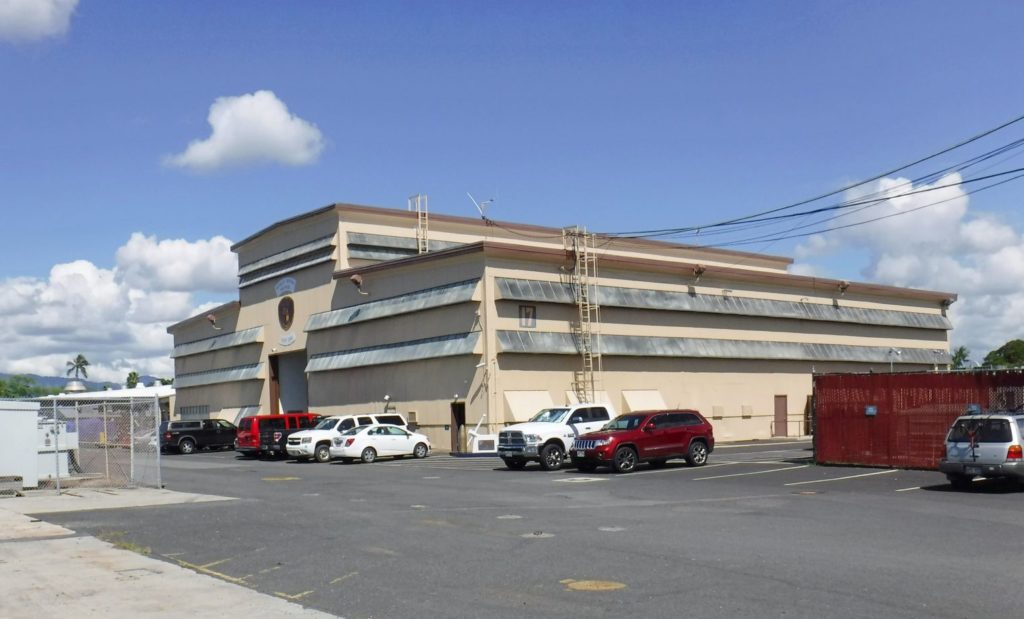
Ze627. This is building 17, now the Head Quarter of MDSU-1, as I said, I was stationed here in this unit between 1981 and 1983.
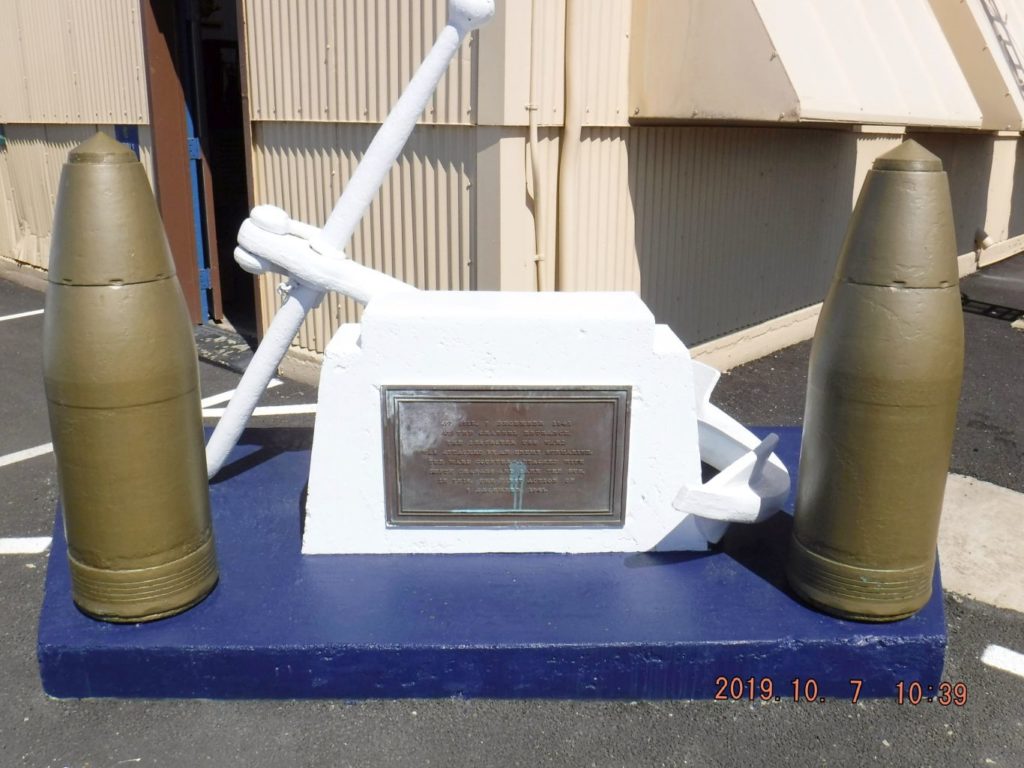
Ze628. The plaque and stand are commemorating the USS Ward firing the First Shot and causing the first casualties in the WWII Pacific War. It is located at this corner of Building 17 at bishop Point.

Ze626. The USS Ward DD-139 plaque at the corner of Building 17 at Bishop Point, Pearl Harbor. If I was the CO or Senior Chief Petty Officer of this command, I would see to it, that the stain on the plaque gets cleaned up.
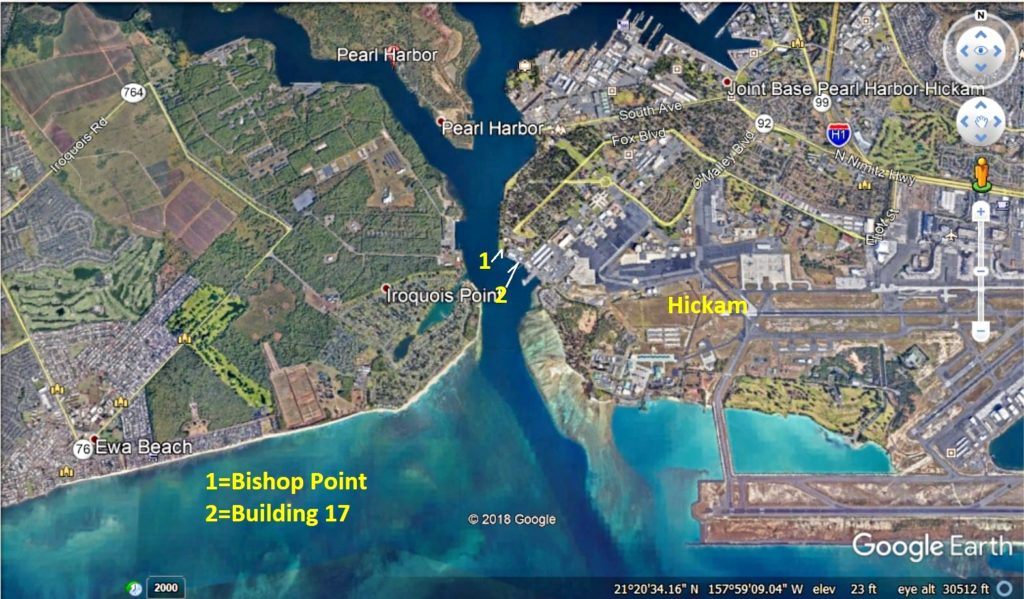
Ze629. This is a Google Earth images of the Pearl Harbor Channel Entrance and Bishop Point and Building 17 at the Alpha Pier Area.
—————————————————
From Wikipedia, USS Ward DD-139, Click here or copy and paste this URL:
https://en.wikipedia.org/wiki/USS_Ward_(DD-139)
USS Ward (DD-139) was a 1,247-long-ton (1,267 t) Wickes-class destroyer in the United States Navy during World War I, later APD-16 (see High speed transport) in World War II. She caused the first American-caused casualties in World War II, when she engaged a Japanese submarine before the attack on Pearl Harbor, and successfully sank her, killing the two crew on boar
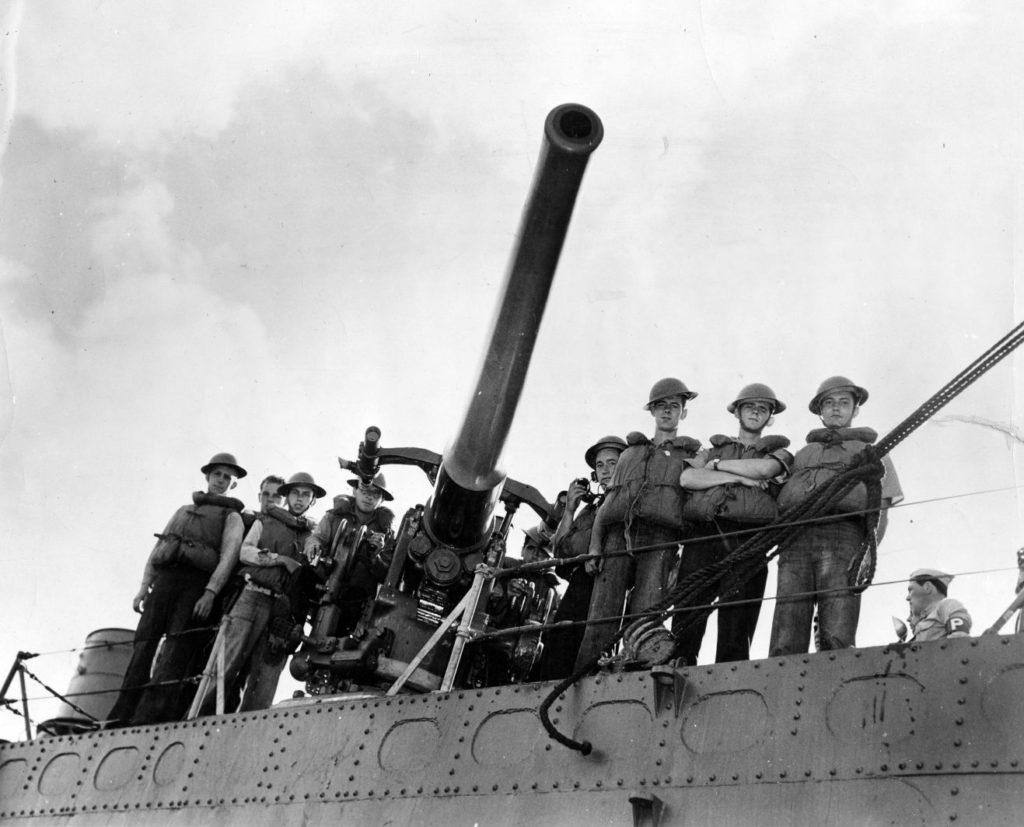
Ze630 from Wikipedia.
The gun crew of No. 3 gun of the U.S. Navy destroyer USS Ward (DD-139): it was cited for firing the first shot the day of Japan’s raid on Hawaii. Operating as part of the inshore patrol early in the morning of 7 December 1941, this destroyer group spotted a submarine outside Pearl Harbor, opened fire and sank her. Crew members are R.H. Knapp – BM2c – Gun Captain, C.W. Fenton – Sea1c – Pointer, R.B. Nolde – Sea1c – Trainer, A.A. De Demagall – Sea1c – No. 1 Loader, D.W. Gruening – Sea1c – No. 2 Loader, J.A. Paick – Sea1c – No. 3 Loader, H.P. Flanagan – Sea1c – No. 4 Loader, E.J. Bakret – GM3c – Gunners Mate, K.C.J. Lasch – Cox – Sightsetter. (quoted from the original 1942-vintage caption) This gun is a 4/50 type, mounted atop the ship’s midships deckhouse, starboard side.
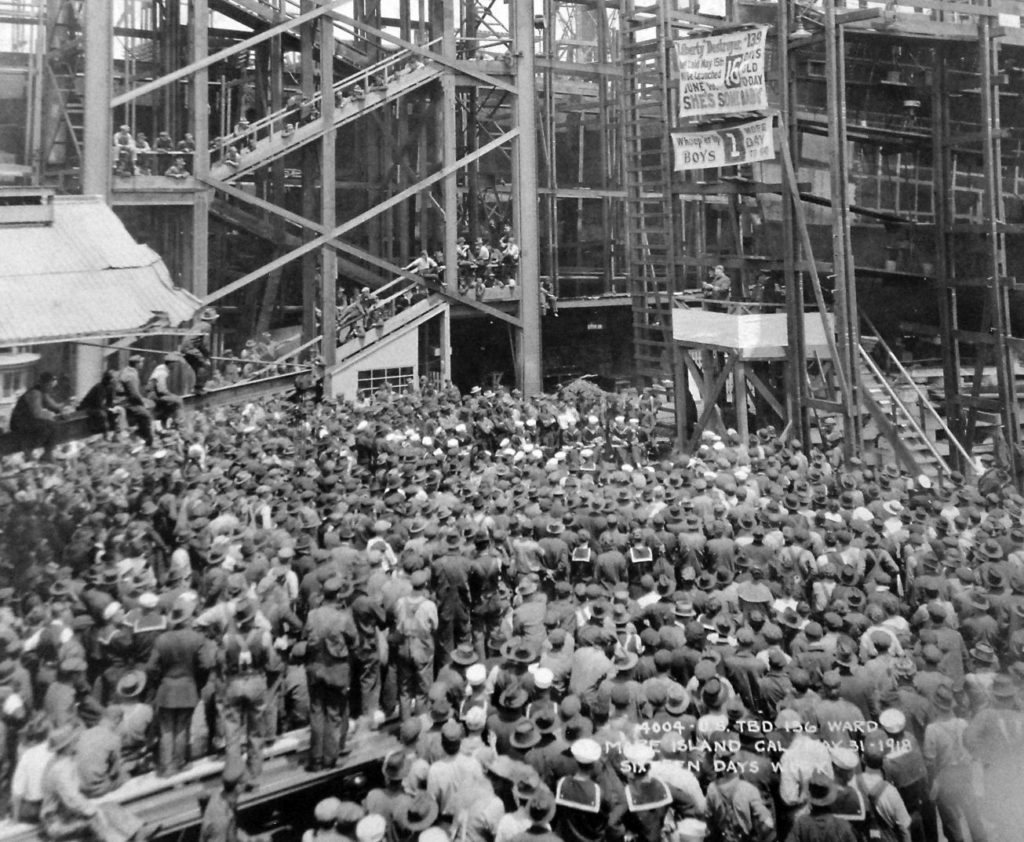
Ze631 from Wikipedia. It was not only the Military who won the war.
Lot-5372-2: USS Ward (DD 139, later APD-16) construction and launching at Mare Island Navy Yard, California. Shown: The ship on May 31, 1918, after sixteen days work. Launched on June 1, 1918, she was commissioned on July 24, 1918. Ward was redesignated as APD-16 in February 1943. USS Ward (DD 139) fired the first shots of WWII on December 7, 1941, when the Japanese attacked Pearl Harbor. During the Battle of Ormoc Bay, December 7, 1944, Ward was attacked by Japanese kamikazes and was damaged. USS O’Brien (DD 725) scuttled the ship. Secretary of the Navy Josephus Daniels Collection. Courtesy of the Library of Congress (2016/06/03).
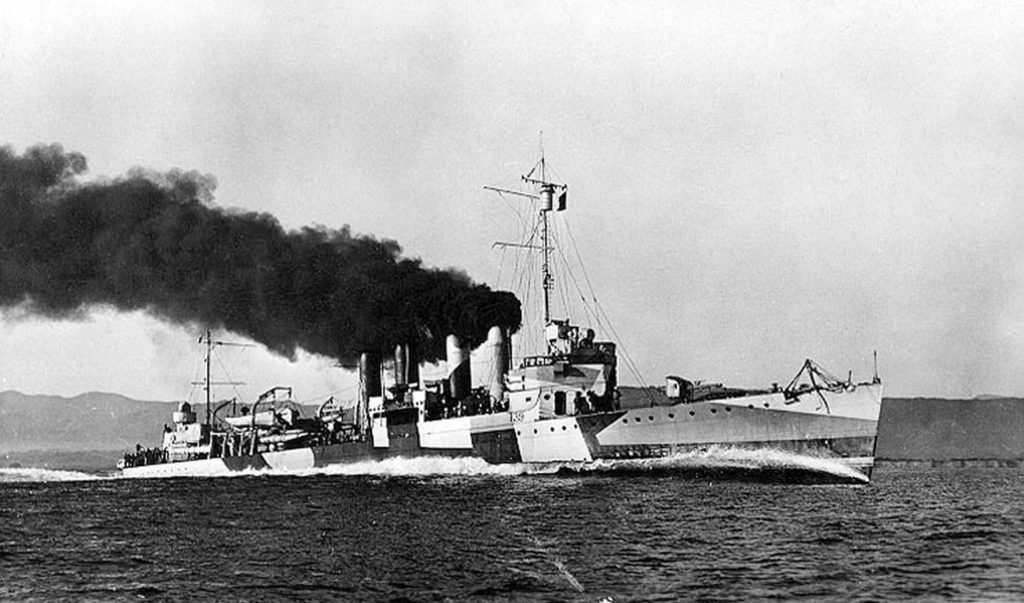
Ze632 USS Ward DD-139, from Wikipedia, is steaming in the Pacific with her war point. Look at that smoke, jack, burning that old black oil in the boilers.
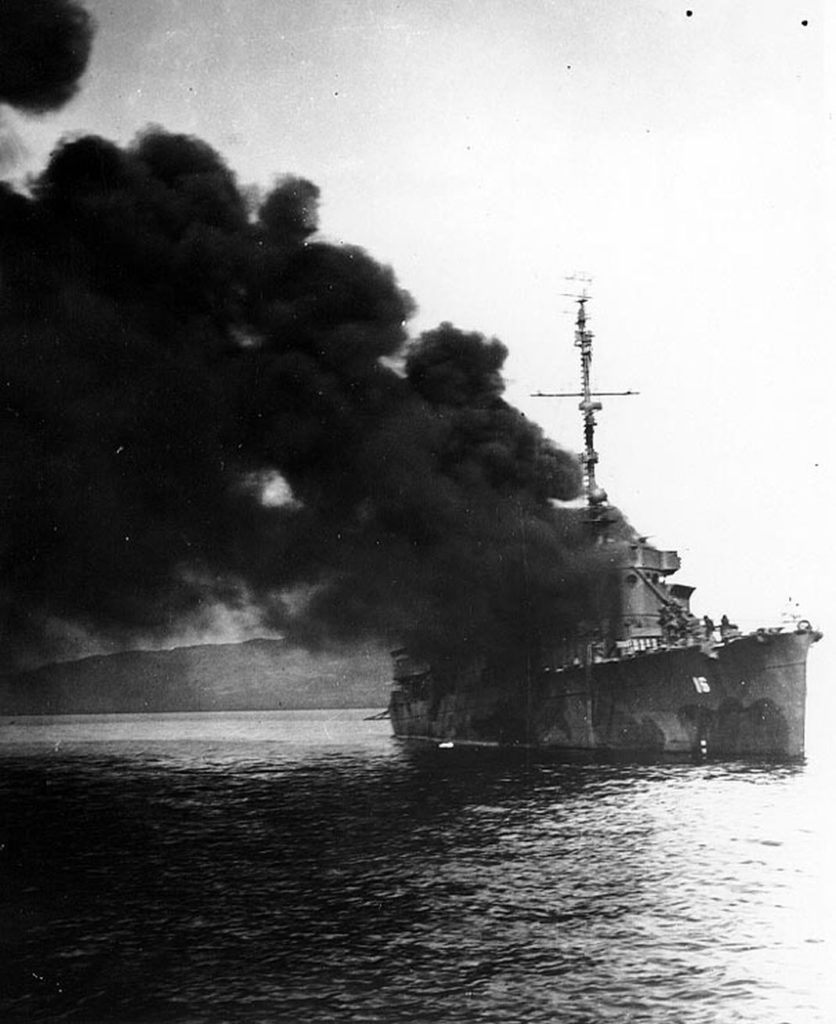
Ze633 from Wikipedia, the fate of the ex USS Ward DD-139 now APD-16,
As the Pacific War moved closer to Japan, Ward was assigned to assist with operations to recover the Philippine Islands. On 17 October 1944, she put troops ashore on Dinagat Island during the opening phase of the Leyte invasion. After spending the rest of October and November escorting ships to and from Leyte, in early December, Ward transported Army personnel during the landings at Ormoc Bay, Leyte. On the morning of 7 December, three years to the day after she fired the opening shot of the US involvement in the war, while patrolling off the invasion area, she came under attack by several Japanese kamikazes. One bomber hit her hull amidships, bringing her to a dead stop. When the resulting fires could not be controlled, Ward’s crew was ordered to abandon ship, and she was sunk by gunfire from O’Brien, whose commanding officer, William W. Outerbridge, had been in command of Ward during her action off Pearl Harbor three years before.
———————————————
The USS Ward has been Found and its gun is St. Paul, MN.
This picture and Information came from this URL, click here or copy and paste it:

Ze634. No. 3 gun from the USS Ward on Dec. 7, 2004, during the observance of Pearl Harbor Day on the state Capitol Mall in St. Paul.
A VFW color guard stands near the No. 3 gun from the USS Ward on Dec. 7, 2004, during the observance of Pearl Harbor Day on the state Capitol Mall in St. Paul. Several crew members from the Ward were on hand to mark the 63rd anniversary of the Dec. 7, 1941, Japanese attack on Hawaii that brought the United States into World War II. The Ward — a destroyer heavily manned by naval reservists from St. Paul — fired the first American shot of the war, sinking a Japanese miniature submarine trying to sneak into Pearl Harbor a little more than an hour before the surprise air attack. After the war ended, the men from the reserve unit formed the First Shot Naval Vets club in St. Paul. They helped get the gun from the Ward brought to St. Paul in 1958. (Craig Borck / Pioneer Press)
The USS Ward has been Found by the Research Ship Petrol owned Paul Allen.
The Petrel is owned by Microsoft co-founder Paul Allen. The 250-foot ship is one of the few capable of exploring waters as deep as 3.5 miles.
The Petrel began its five-day expedition in the Philippines on Nov. 28 (2017 Karl believes) , first surveying five Japanese destroyers sunk during World War II’s Battle of Surigao Strait, the statement said. The research vessel then surveyed the Ward on Nov. 30 before returning to port in Surigao City on Saturday.
Searchers verified the wreckage by cross-referencing historic drawings and schematics of the Ward.
Allen has also spearheaded expeditions that discovered the wrecks of the USS Indianapolis in August and the Japanese battleship Musashi in 2015.
———————————————————-
The Japanese Mini Submarines: The pictures and information came from this URL, click here or copy and paste it:
https://sanctuaries.noaa.gov/maritime/japanese-mini-subs/
As part of the attack on Pearl Harbor on December 7, 1941, the Imperial Japanese Navy sent an attack group of submarines to surround Oahu and sink ships attempting to flee. Five of the submarines carried top-secret “mini submarines.” These submarines, each armed with two torpedoes and carrying two crew members, were to penetrate inside the harbor under cover of darkness before the attack began. They were to surface and fire their torpedoes during the aerial attack. Then, they would dive and escape the harbor, and rendezvous with their “mother submarines,” again under cover of darkness the night of December 7.
While the aerial attack was devastating, the mini submarines failed in their mission. Only one made it into the harbor, and it was quickly sunk during the attack that morning. Another submarine washed ashore on the morning of December 8, and its surviving crew member, Kazuo Sakamaki, was captured along with his craft. The submarine was studied and then toured the U.S. to promote the sale of War Bonds. It is now on permanent display at the National Museum of the Pacific War in Fredericksburg, Texas.
Note from Karl: There is much more in the above URL and here are two images, there are also more in the URL:
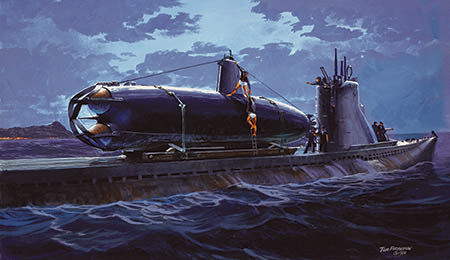
U635. Mounted on the after deck of the “mother” submarine I-24, mini submarine HA-19 is boarded by its crew, Kazuo Sakamaki and Kiyoshi Inagaki, in the pre-dawn hours of December 7, 1941. Painting by Tom W. Freeman, courtesy of Valor in the Pacific National Historical Park
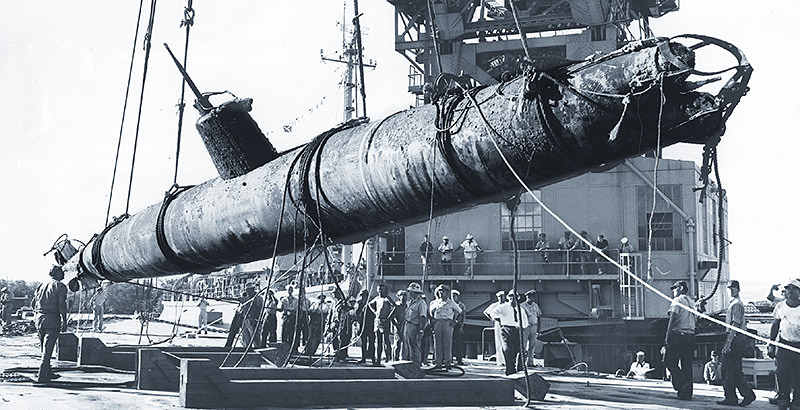
U636. The mini submarine discovered in Keʻehi Lagoon in 1960 is lifted to the surface by the U.S. Navy. Photo courtesy of Naval History and Heritage Command
———————————————-
Now a little history of Bishop Point. A boat/ship from here spotted the submarine and reported to the USS Ward.
The image, drawings and information came from this URL, click here or copy and paste the URL:
https://www.loc.gov/item/hi0925/
U.S. Naval Base, Pearl Harbor, Quay Wall and Berthing Wharf, Bishop Point, on the waterfront near Pier No. 1, Pearl City, Honolulu County, HI.
– Significance: It is located within the Pearl Harbor National Historic Landmark. Constructed in 1941, it was part of a complex of buildings, piers and quay walls at Bishop Point Section Base during WWII that was home to the Harbor Patrol and Net Depot. The function of the area is significant for its association with the beginning of the Japanese attack on Pearl Harbor. Early in the morning of December 7, 1941, prior to the Japanese dive bomb attack, a ship patrolling from the Section Base, the USS Condor, sighted a Japanese midget submarine offshore. After reporting the sighting to the USS Ward, the Ward sank the submarine. These were the first shots fired on December 7, and this event marked the official beginning of the United States entry into the Second World War. During the remainder of the war, this quay wall continued to berth small Harbor Patrol craft, and function as a component of the Net Depot.
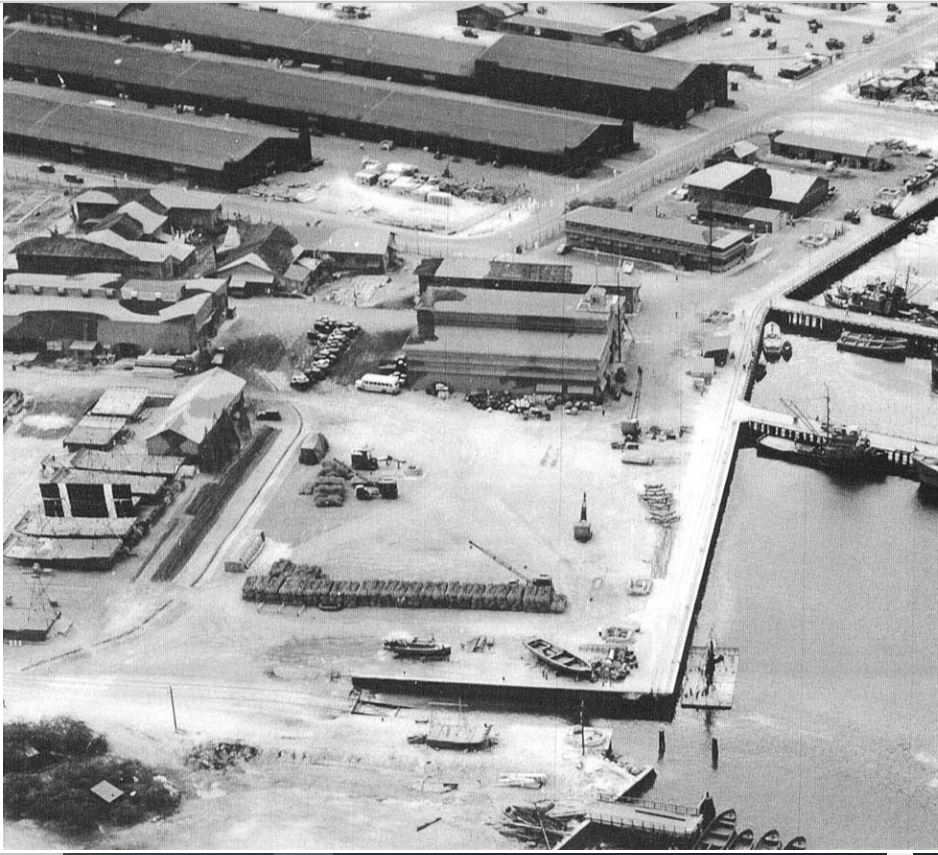
Ze637. This is a WWII image of the Harbor Patrol and Net Depot at Bishop Point at the entrance of the Pearl Harbor Channel. These are the Alpha Wharfs/Piers. It looks like there are some target sleds and maybe they were lounged at that slip.
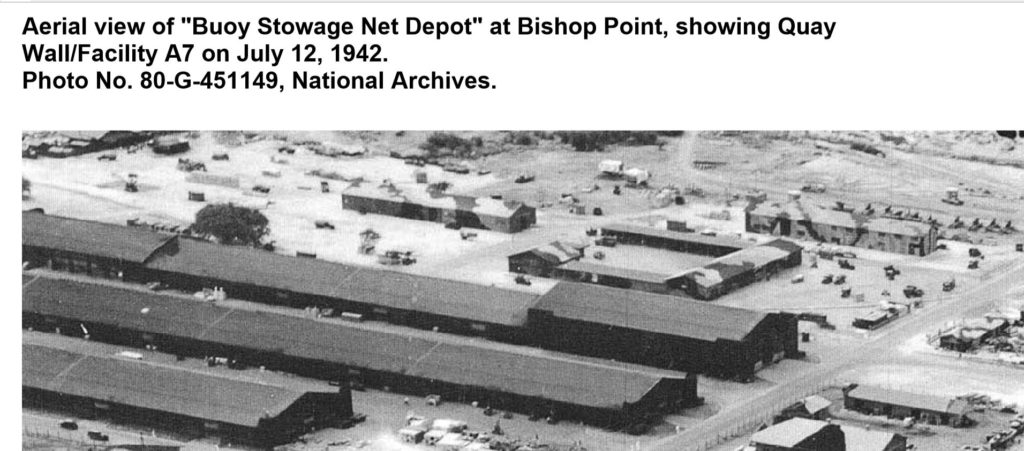
Ze638. This is the upper section of image Ze637. This is a WWII image of the Harbor Patrol and Net Depot at Bishop Point at the entrance of the Pearl Harbor Channel. These are the Alpha Wharfs/Piers.
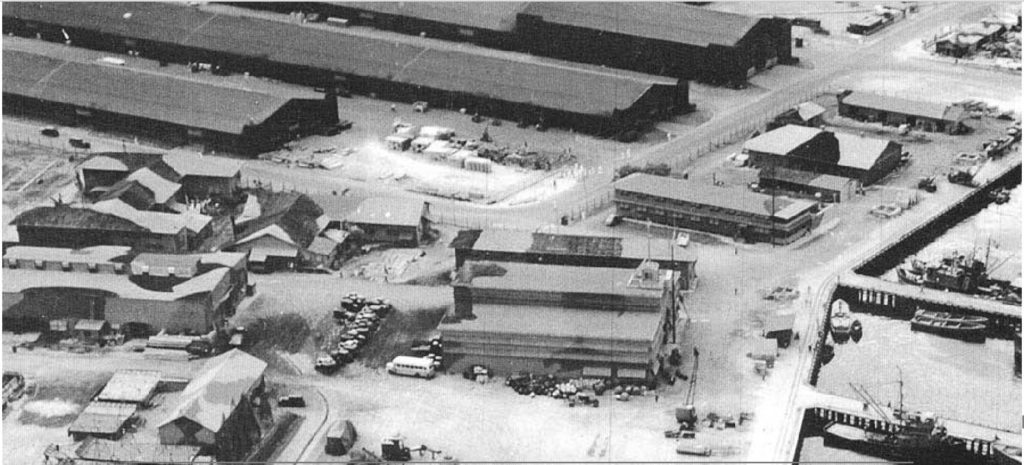
Ze639. This is the middle section of image Ze637. This is a WWII image of the Harbor Patrol and Net Depot at Bishop Point at the entrance of the Pearl Harbor Channel. These are the Alpha Wharfs/Piers. It looks like Building 17 is there already. Some of the building roofs seem camouflage painted.
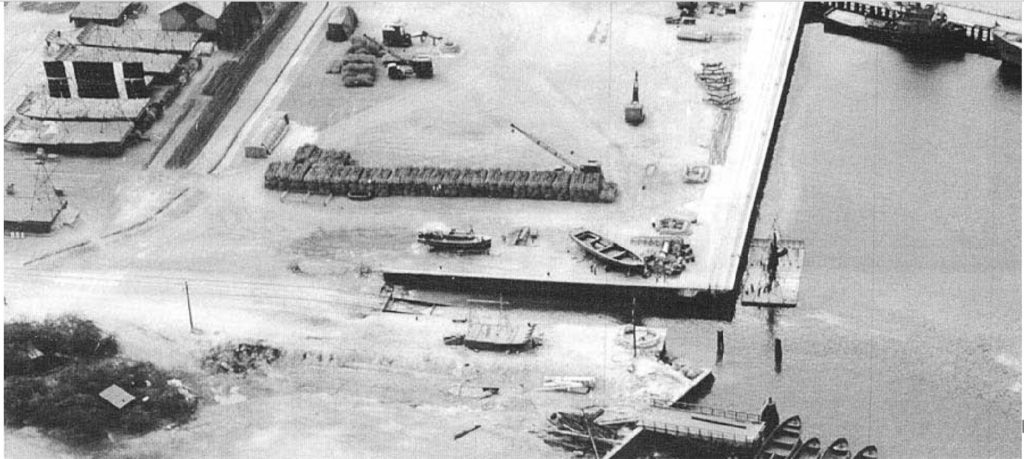
Ze640. This is the lower section of image Ze637. This is a WWII image of the Harbor Patrol and Net Depot at Bishop Point at the entrance of the Pearl Harbor Channel. These are the Alpha Wharfs/Piers. It looks like there are some target sleds and maybe they were lounged at that slip.
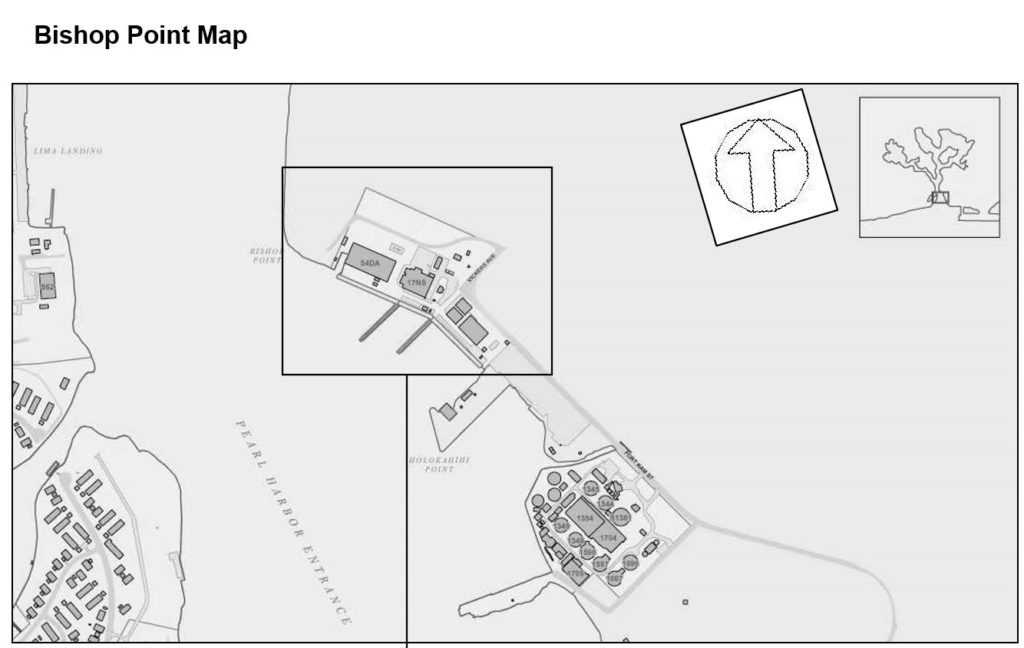
Ze641. This is a Navy Facility map of the Bishop Point area with the Alpha Wharfs/Piers from the WWII era.
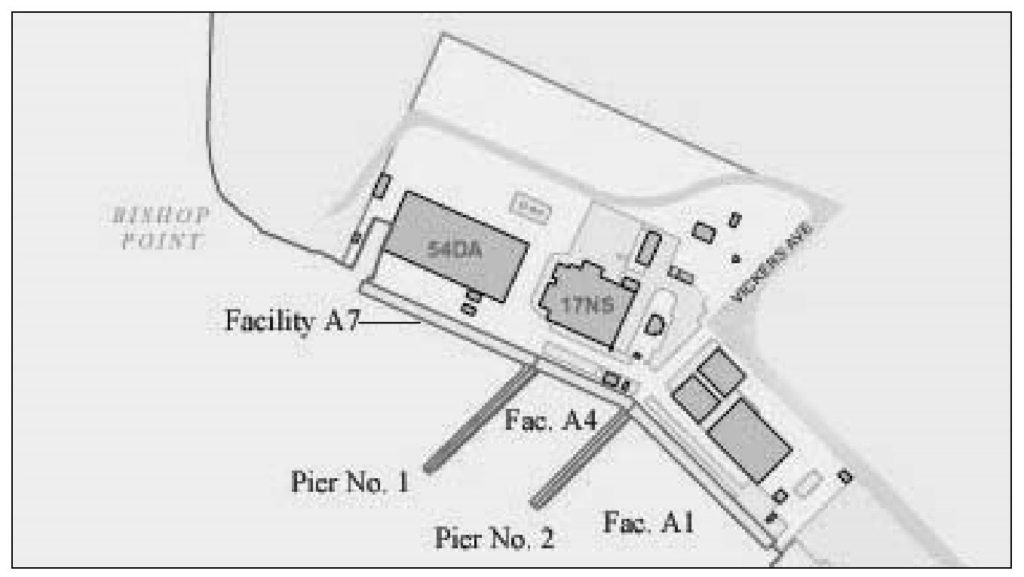
Ze642. Image Ze641 zoomed in. This is a Navy Facility map of the Bishop Point area with the Alpha Wharfs/Piers from the WWII era.
It just was something that had to be done, Outerbridge was quoted as saying years after sinking the Ward, adding that there was little emotion involved in executing the task. The Research Vessel Petrel, led by Allen s crew, cross-referenced historic drawings and schematics of the ship to confirm that the location was accurate. It was found 650 feet below the ocean s surface, according to Stars and Stripes .
s captain reported their brief encounter had taken place. A single four-inch diameter hole in the hull, just below the conning tower, marks the first shot fired in the Pacific War. Much has been written about the construction, characteristics and equipment of the Type A ko-hyoteki. The description that follows is based on Japanese sources, the archival records from the disassembly and analysis of the midget submarines HA-14 and HA-21 in Australia, and HA-19 in the United States, and archaeological documentation of HA-8 in Groton, HA-30 at Kiska, the three-piece mini, and the mini sunk by USS